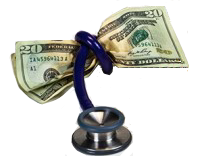A few months ago, your employer likely requested that you update your employee benefits plan. One of those elections may have been your flexible spending account (FSA) which allows an employee to allocate pre-tax dollars towards their medical expenses for the year. Starting in 2013, the amount of funds employees can allocate to an FSA will be capped at $2,500. It is important to review your FSA now that we’re almost halfway into the year.
 What is a flexible spending account (FSA)?
What is a flexible spending account (FSA)?
It’s a medical spending account with funds an employee contributes from their paycheck on a pre-tax basis. An employer can also fund a FSA for employees. The FSA is used to pay for out of pocket medical expenses, child care, elective procedures and other qualified expenses. The primary benefit is the tax savings which can be in the thousands if planned properly.
How much do I save in taxes?
Let’s suppose you earn $100,000 annually, you could elect to include $2,000 to pay for your qualified medical expenses with pre-tax dollars. In this case, you would save 35% to 40% in taxes or $750 to $800 if you used the entire contribution amount. Tax Savings = 25% (Federal Tax) + ~5-10% (State Tax) + 5.65% (Social Security/Medicare Tax) = 35-40%.
What changes can I expect to my flexible spending account starting in 2013?
Currently, the maximum contribution amount is set by the employer. However, starting in 2013, the maximum contribution allowed for employees will be capped at $2,500. This limit does not apply to employer contributions. Also, if two spouses work for the same company, each would still be able to contribute $2,500 for a total of $5,000.
The use it or lose it provision
The biggest drawback of the FSA is that the amount you contribute must be used during the plan period which is typically the calendar year, although some employers offer a grace period of 2 1/2 months or until March 15 of the following year. If it’s not used, it goes back to your employer. Given this fact, it is important to try to use as much of your FSA as possible this year as the maximum contribution limit will be reduced to $2,500 starting in 2013. Review your FSA plan for the year and schedule your doctor appointments before year end to get the full benefit.
Are there any other tax benefits for contributing?
By contributing to the FSA, your taxable income will be reduced by the same amount. This could mean a lot to folks whose taxable income after the FSA contribution lowers their tax bracket. For instance, a married couple with a combined income of $195,000 that contributes $5,000 to an FSA will reduce their total income to $190,000 could lower their tax bracket from 33% to 28%. This could mean a lot of savings on short-term capital gains, ordinary dividends and their eligibility for certain educational and child tax credits. Even more, their taxable income will also be lower for alternative minimum tax (AMT) purposes.
Any restrictions?
Other than insulin, all over the counter medical purchases are only covered if accompanied with a prescription from your doctor. It’s annoying but make sure your doctor provides you with a prescription for all over the counter drugs such as Tylenol and cold medicine for the year.
More Questions? Browse Answers or ask your budgeting questions.
Related Articles
->Should Parents Add Their Adult Children To Their Health Care Plan?
->Are Small Businesses Buying Into the Health Care Tax Credit?
->Are You Reviewing Your Medical Bills For Overages?
->How Should I Keep My Budget on Track?
->Risks with Health Care Credit Cards
->How Do Changes To The Health Care Law Impact My Grown Children?
->Applying For The Child-Care Tax Credit Even With A High Income
->How Your Credit Report Is Used By Potential Employers


